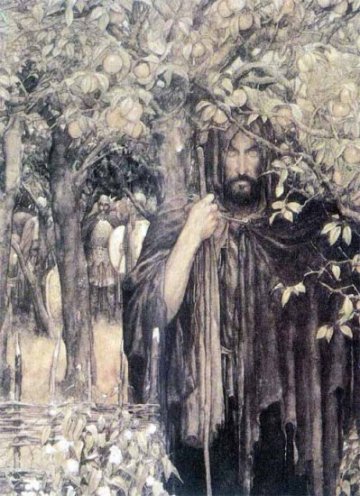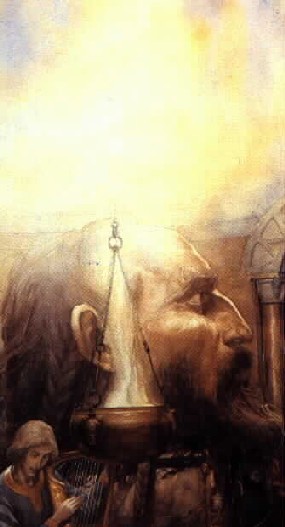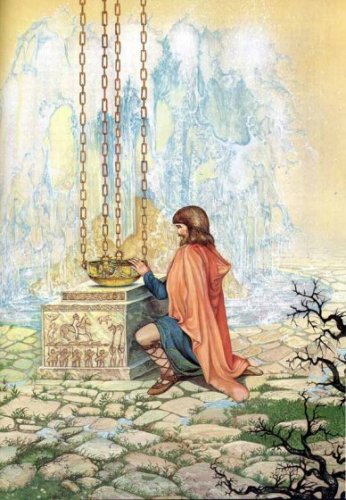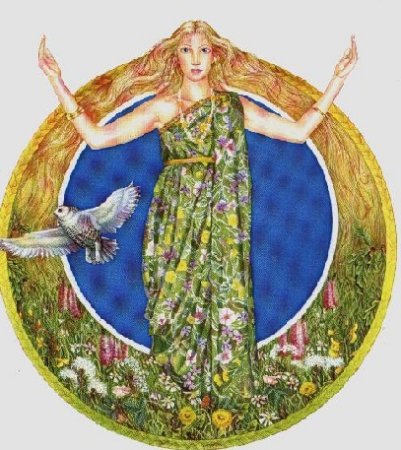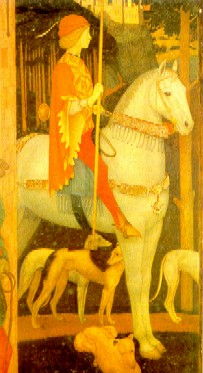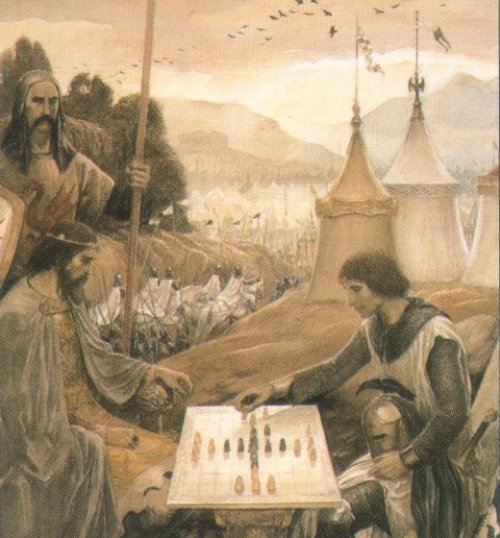Mabinogion
The Mabinogion was a collection of eleven (twelve) tales from the Welsh myths. The tales of the Mabinogion were preserved in two manuscripts, White Book of Rhydderch (c. 1325) and the Red Book of Hergest (c. 1400). Though the Rydderch manuscript was the earlier of the two, the tales of Lludd, Culhwch and Owein survived only in fragments, while the Dream of Rhonabwy was completely lost. Only the Hergest manuscript contained all eleven tales.
The Mabinogion was first translated into English by Lady Charlotte Guest. It was Lady Charlotte who gave the title of "Mabinogion" to this collection of tales. Also, Lady Charlotte included a twelfth tale called Hanes Taliesin ("Tale of Taliesin"), belonging to the Independent group. However, the Hanes Taliesin was not found in the two early manuscripts, so some of the later translations of the Mabinogion do not include the story of Taliesin.
The tales from the Mabinogion can be divided into three categories. The first four tales belong to the Four Branches of the Mabinogi ("Pedair Cainc y Mabinogi"). The next four (or five, if including Taliesin) were the Independent tales, in two tales of which Arthur appeared on the scene. The last three tales fall into a category known as the Welsh romances, similar to those of the French romances written by Chretien de Troyes.
What were the four Branches of the Mabinogi? These four tales were told in the correct order, with Pryderi appearing in all four tales, but he only played a minor role in each of the tale. It began in Pwyll Lord of Dyved with his birth, and then it ended with Peredur's death in the fourth tale, Math Son of Mathonwy.
With the independent tales, The Dream of Maxen involved an emperor marrying a maiden he saw in his dream, while in Lludd and Llevelys, the story involved Britain suffering three strange plagues. Two other tales involved Arthur and his companions (not from the Round Table). The most important of these two was written in 1100, called Culhwch and Olwen. The other was called the Dream of Rhonabwy.
The Welsh romances were similar to the popular French Arthurian romances written by Chrétien de Troyes (fl. 1165-1190). Since these three romances belonged to the mainstream Arthurian literature, I have only briefly summarised Peredur and used Chrétien's tales instead of Owein and Geraint from the Mabinogion.
Four Branches of Mabinogi
The Four Branches of the Mabinogi (Pedair Cainc y Mabinogi) were four Welsh tales of the Mabinogion proper. These tales were told in sequence.
What is interesting is that Pryderi, the son of Pwyll and Rhiannon, appears in all four tales, from his birth in the first tale to his death in the last of the Branches. Yet, he was never the main character in any of the tales.
The first and third tale centered on the kingdom of Dyved ruled by Pwyll and Pryderi, in the south in Wales, while the second tale was set in Britain (England, ruled by Bran) and Ireland. The last tale was concentrated around Gwynedd, the northern kingdom of Wales, ruled by Math the brother of Don.
Three Welsh Romances
Five Independent Tales
Related pages
Welsh Romances
The last three tales in the Mabinogion were Welsh romances, known as Tair Rhamant, similar to those written by the French poet Chretien de Troyes, who flourished in the second half of the twelfth century.
The Mabinogion's Gereint Son of Erbin or Geraint and Enid bears striking resemble to Chretien's Erec and Enide. The Lady (or Countess) of the Fountain paralleled with that of Chretien's Knight of the Lion (Yvain).
The link between Peredur and Conte du Graal (or Perceval) was similar but has less in common than the other tales. Instead of Peredur having seen the grail at his uncle's castle (like in Perceval), he saw a severed head on a platter!
In fact, the three romances were most definitely written after Chretien de Troyes and were influenced by the French writer. These three romances showed that they were also influenced by courtly manners and knighthood. The heroes were undoubtedly knights, which were absent from the other tales.
I have omitted the last three tales in the Mabinogion for two reasons.
These tales were more entwined with the Arthurian legend and the similarities between the French and Welsh versions give me some justification of not wasting any more time spent on them.
The second reason why I preferred the French version was because Chretien added more details and life to the characters and scenes than the Welsh versions. The Welsh romances were less refined than Chretien's romances.
So I have the French versions of these romances that can be found in the Arthurian Legends.
Below are the three links from the Arthurian romances:
Geraint and Enid (See Erec and Enide)
The Lady of the Fountain (See Yvain and the Lady of the Fountain)
Peredur Son of Evrawg (See Perceval's Tradition for a brief summary of Peredur)
If you are interested the Welsh version of the family tree of Arthur, see the House of Arthur and Culhwch.
By Jimmy Joe
